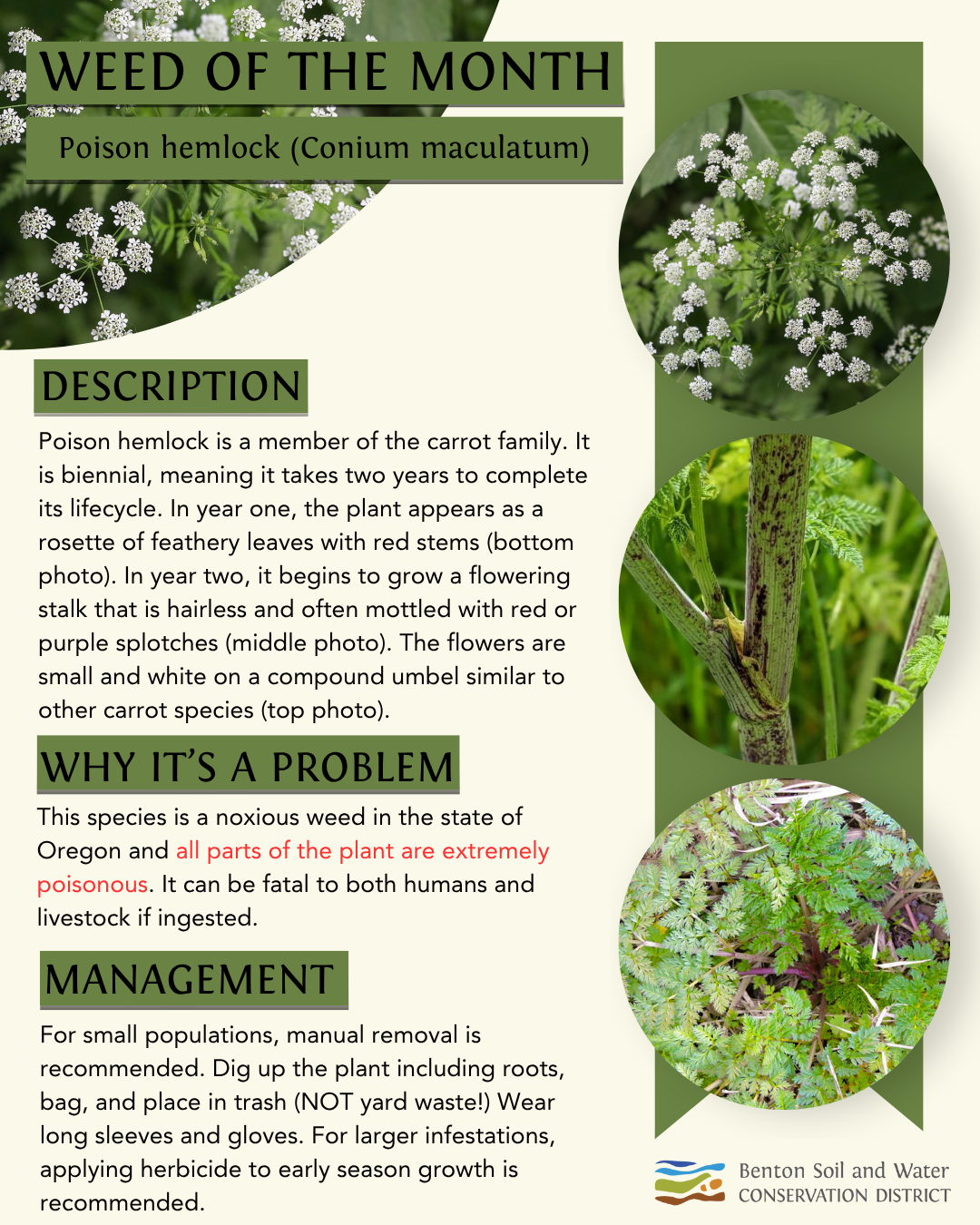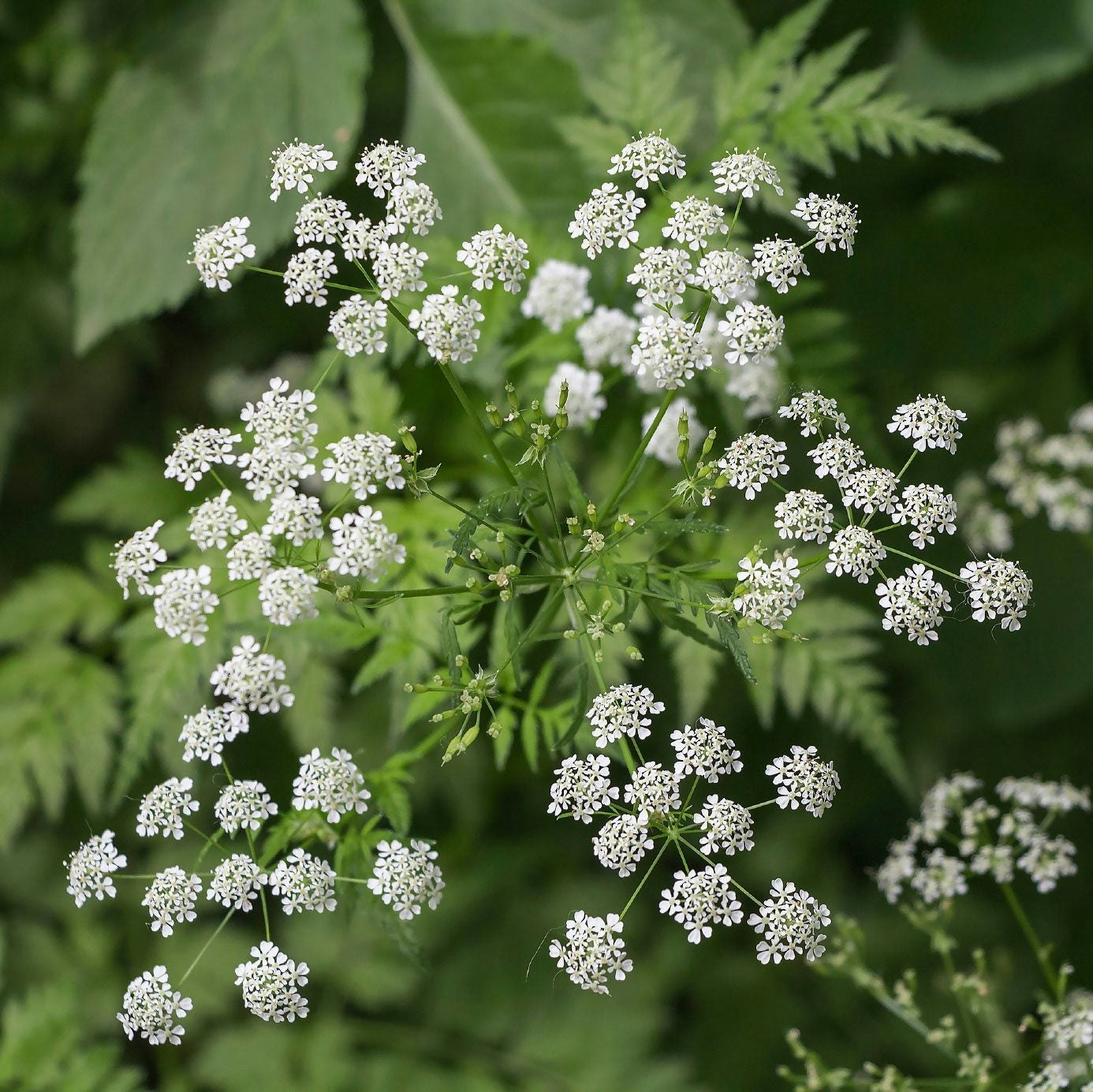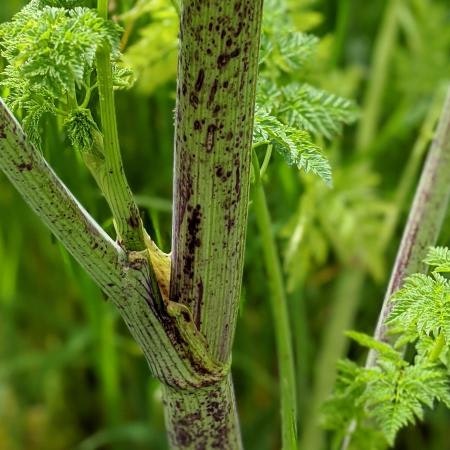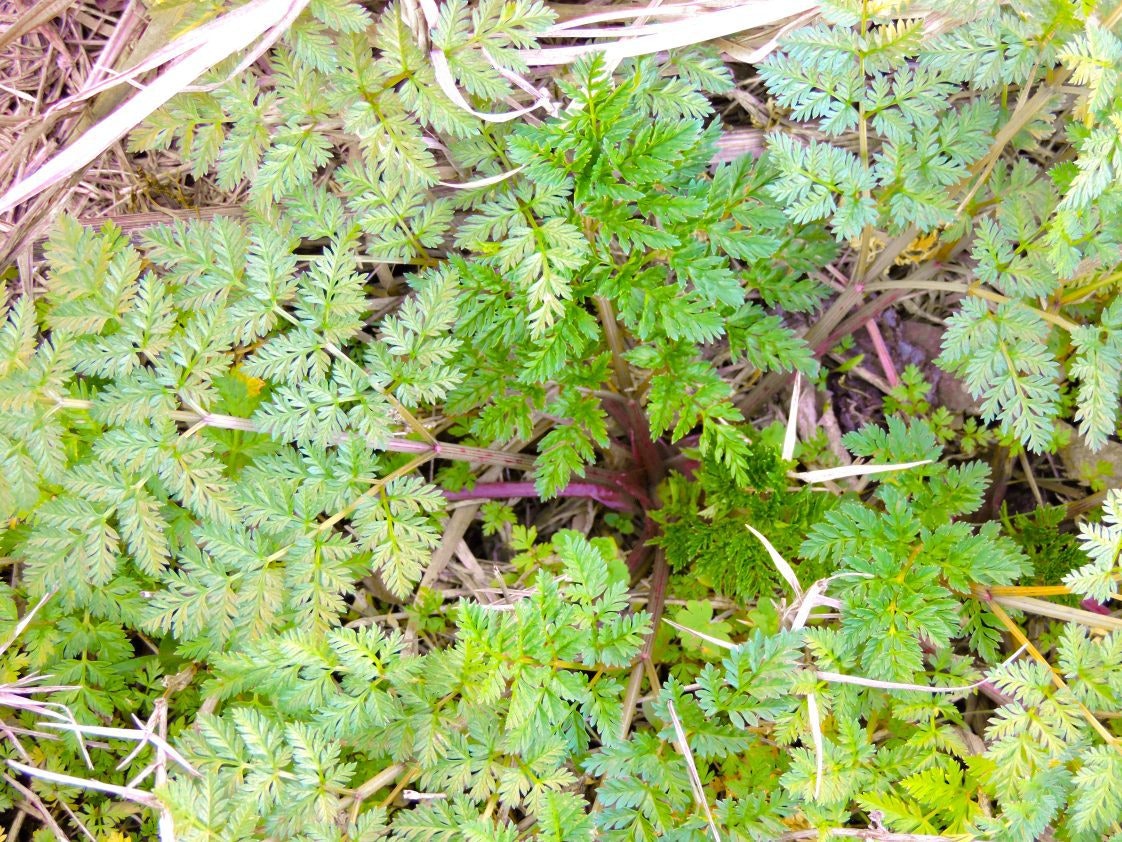The Dirt | Weed of the Month July 2025 | Poison Hemlock (Conium maculatum)







Our weed of the month this month is poison hemlock (Conium maculatum). Infamous for being the plant that likely poisoned the Greek philosopher Socrates, poison hemlock is an extremely poisonous plant that poses significant threat to humans and animals alike. A member of the carrot family, this species can easily be mistaken for other harmless species such as Queen Anne's lace (Daucus carota), wild carrot (Daucus pusillus), and more.
Poison hemlock is a biennial plant, meaning it takes two years to complete its lifecyle. In year one, it appears as a rosette of feathery leaves with red stems. In tear two, it grows a hairless, flowering stalk that is often mottled with red or purple blotches. The flowers are small and white and on a compound umbel characteristic of carrot species.
Because this plant can be dangerous, it is recommended to remove infestations before they spread. For small populations, simply digging the plant up (including root system), bagging, and disposing of it in the trash is recommended. For larger infestations, applying herbicide in early spring to early growth increases the chance of eradication. Though poison hemlock isn't likely to cause rashes the same way poison oak and poison ivy does, it is still possible and therefore recommended to wear protective gear (long sleeves, gloves) when handling this species. Do not eat or otherwise ingest any part of this plant.
We recognize that poison hemlock is a very visible plant in Benton county. Specifically, Benton SWCD recently held a meeting with Corvallis Parks & Recreation about implementing more proactive management of this species around the city of Corvallis. If you see this plant in public areas where you think it could be hazardous (trails, bike paths, natural areas, etc), please email Cierra Dawson at cierra@bentonswcd.org.

